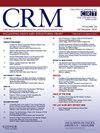Angiographic and clinical impact of balloon inflation time in percutaneous coronary interventions with sirolimus-coated balloon: A subanalysis of the EASTBOURNE study
IF 1.6
Q3 CARDIAC & CARDIOVASCULAR SYSTEMS
引用次数: 0
Abstract
Introduction
Percutaneous coronary intervention (PCI) with drug-coated balloon (DCB) is an attractive strategy for the treatment of obstructive coronary artery disease (CAD). The implantation technique strongly influences the outcome of DCB PCI: accurate and adequate lesion preparation, short delivery time and sufficient DCB inflation time are deemed crucial to warrant adequate drug transfer and mitigate the risk of immediate vessel recoil and flow-limiting dissections. However, the optimal DCB inflation time is unclear, current consensus documents suggesting 30–60 s based on Experts' opinion. However, clinical studies comparing the prognostic role of different inflation times are scarce and mainly involve paclitaxel-coated balloons. In this study we aimed to assess the impact of different inflation times in patients undergoing PCI with a sirolimus-coated balloon (SCB).
Methods
We conducted a post-hoc analysis of the prospective, multicenter, EASTBOURNE study, classified into two study groups according to balloon inflation time: long (>30 s) versus short (≤30 s). The primary endpoint was target lesion revascularization (TLR) at 24-month follow-up. Secondary clinical endpoints were major adverse clinical events (MACE), death, non-fatal myocardial infarction (MI), and BARC 2–5 bleedings. Furthermore, angiographic endpoints (the rate of bailout stenting and post-procedural TIMI flow <3) were also addressed.
Results
A total of 2289 lesions (2092 in the long inflation group, 197 in the short inflation group) were included in the analysis. Median balloon inflation time was 60 s in the long inflation and 30 s in the short inflation group. The two study groups experienced a similar rate of TLR [6.2 % in the short versus 6.3 % in the long inflation group, p = 1.00] as well MACE (p = 0.683), death (p = 0.102), non-fatal MI (p = 0.822), and BARC 2–5 bleedings (p = 0.252). These results were consistent when considering subpopulations with different target lesion phenotypes (in-stent restenosis, de-novo lesions, large and small vessels). Interesting, the rate of bailout stent implantation and post-procedural TIMI flow <3 was higher in the short SCB inflation time, as compared to the standard strategy.
Conclusions
Short vs. long SCB inflation time is associated with a higher need of bailout stenting after PCI with SCB, with similar clinical outcomes at 24-month follow-up.

使用西罗莫司涂层球囊进行经皮冠状动脉介入治疗时球囊充气时间对血管造影和临床的影响:EASTBOURNE 研究的子分析
药物包被球囊(DCB)经皮冠状动脉介入治疗(PCI)是治疗阻塞性冠状动脉疾病(CAD)的一种有吸引力的策略。植入技术强烈影响DCB PCI的结果:准确和充分的病变准备,短的递送时间和足够的DCB膨胀时间被认为是保证充分的药物转移和减轻立即血管反冲和血流受限夹层风险的关键。然而,DCB的最佳膨胀时间尚不清楚,根据专家的意见,目前的共识文件建议30-60秒。然而,比较不同充气时间对预后作用的临床研究很少,而且主要涉及紫杉醇包被气球。在这项研究中,我们旨在评估不同充气时间对使用西罗莫司包被球囊(SCB)的PCI患者的影响。方法:我们对前瞻性、多中心、EASTBOURNE研究进行事后分析,根据气球膨胀时间分为两个研究组:长(≤30秒)和短(≤30秒)。在24个月的随访中,主要终点是靶病变血运重建术(TLR)。次要临床终点为主要不良临床事件(MACE)、死亡、非致死性心肌梗死(MI)和BARC 2-5出血。此外,血管造影终点(搭桥率和术后TIMI流量)也得到了解决。结果共纳入2289例病变(长膨胀组2092例,短膨胀组197例)。在长期通货膨胀组中,气球膨胀时间的中位数为60秒,在短期通货膨胀组中为30秒。两个研究组的TLR发生率相似[短期膨胀组为6.2%,长期膨胀组为6.3%,p = 1.00], MACE (p = 0.683)、死亡(p = 0.102)、非致死性心肌梗死(p = 0.822)和BARC 2-5出血(p = 0.252)。当考虑不同靶病变表型(支架内再狭窄、新生病变、大血管和小血管)的亚群时,这些结果是一致的。有趣的是,与标准策略相比,在较短的SCB膨胀时间内,救助支架植入率和术后TIMI流量<;3更高。结论:SCB膨胀时间短与SCB膨胀时间长与PCI合并SCB后更高的救助支架需求相关,在24个月随访时具有相似的临床结果。
本文章由计算机程序翻译,如有差异,请以英文原文为准。
求助全文
约1分钟内获得全文
求助全文
来源期刊

Cardiovascular Revascularization Medicine
CARDIAC & CARDIOVASCULAR SYSTEMS-
CiteScore
3.30
自引率
5.90%
发文量
687
审稿时长
36 days
期刊介绍:
Cardiovascular Revascularization Medicine (CRM) is an international and multidisciplinary journal that publishes original laboratory and clinical investigations related to revascularization therapies in cardiovascular medicine. Cardiovascular Revascularization Medicine publishes articles related to preclinical work and molecular interventions, including angiogenesis, cell therapy, pharmacological interventions, restenosis management, and prevention, including experiments conducted in human subjects, in laboratory animals, and in vitro. Specific areas of interest include percutaneous angioplasty in coronary and peripheral arteries, intervention in structural heart disease, cardiovascular surgery, etc.
 求助内容:
求助内容: 应助结果提醒方式:
应助结果提醒方式:


